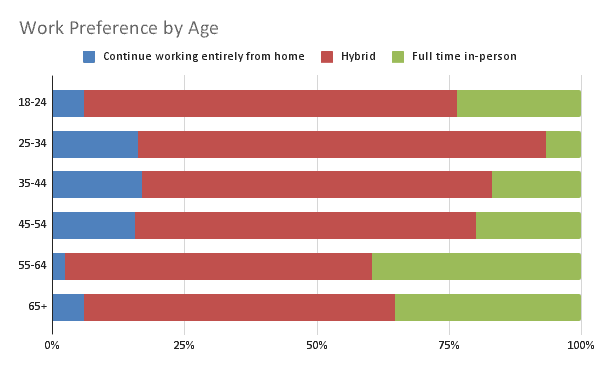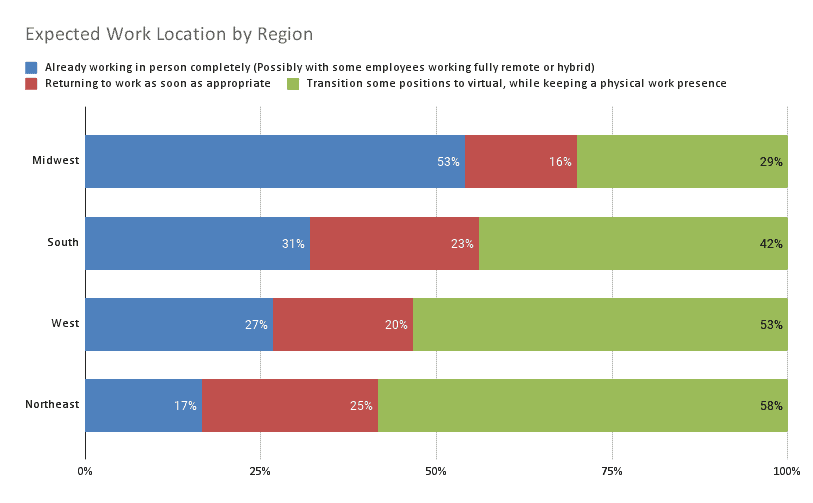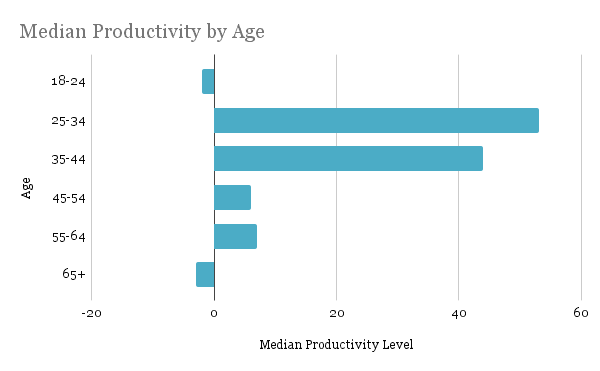Throughout the 2021 Spring semester, a team of Butler University students worked together, in conjunction with the Level365 Marketing Team, to research the implications of COVID-19 and the work from home requirements on the current business environment. Their research and survey sought to identify market trends, employee and employer experiences, and communication platforms across organizations. They also compared the various channels employees have been using in remote work environments through video, conference, and direct audio calls.
Level365 worked with these students to give them direct insight into the industry and guide them on helpful questions they should ask. Level365 has an interest in understanding employees’ current work from home environment since Level365’s Unified Communications voice & collaboration service allows businesses to work from anywhere easily.
The Butler team gave Level365 a report with their general insights into the future outlook of the ‘work from home’ environment by collecting primary and secondary research. Here are some of the key findings.
Work preference by age
The first finding that we, Level365, thought was interesting is depicted in the graph below, work preference by age.

- Respondents between 25 and 54 years old ranked highest on those wanting to work from home, averaging about 16%.
Of all the respondents, those in this age group ranked the lowest on those wishing to work full-time in the office; however, it’s important to note that this was about equal to those wanting to work from home full-time. Respondents in this age group commonly have children at home, making working from home more convenient when caring for their children. This same logic could also explain why respondents ages 25 to 34, when people commonly start having children and newborns, ranked the lowest as wanting to work in the office full-time at 7%.
- Respondents 18 to 24 and 55+ years old ranked the lowest as wanting to work from home, averaging at 5%.
While a quarter of younger respondents elected to work full-time from the office, 37% of older respondents preferred working full-time in person. This data tells us that respondents who are new to the job market and those who have been in it for a long time prefer working in person, perhaps because of the difficulty of starting a new job or changing how they’ve been working at a job long term.
Overall, a majority of respondents preferred to have a hybrid method. About 58% of respondents 55+ preferred it, two-thirds of respondents 35 to 54 preferred it, 70% of 18 to 24 preferred it, and 77% of respondents 25 to 34 preferred it.
EXPECTED WORK LOCATION BY REGION
While compiling secondary data, Butler students found that the work from home requirement has significantly altered executives’ perspectives on maintaining office spaces.
- 4% of CEOs believing their company will need more
- 75% of CEOs stating they will need less office space in the future (Lambert, 2021).
The COVID-19 work-from-home requirements have significantly impacted the real estate industry. Homes that possess home offices have increased in value and can be competitively sought after by home buyers (First Research & Mergent, Inc., 2021). According to their research, the commercial real estate market has been negatively affected due to businesses transitioning to remote work environments for the foreseeable future.

-
Northeast – Connecticut (CT), Maine (ME), Massachusetts (MA), New Hampshire (NH), Rhode Island (RI), Vermont (VT), New Jersey (NJ), New York (NY), and Pennsylvania (PA)
-
Midwest – Illinois (IL), Indiana (IN), Michigan (MI), Ohio (OH), Wisconsin (WI), Iowa (IA), Kansas (KS), Minnesota (MN), Missouri (MO), Nebraska (NE), North Dakota (ND), and South Dakota (SD)
-
South – Delaware (DE), Florida (FL), Georgia (GA), Maryland (MD), North Carolina (NC), South Carolina (SC), Virginia (VA), District of Columbia (DC), West Virginia (WV), Alabama (AL), Kentucky (KY), Mississippi (MS), Tennessee (TN), Arkansas (AR), Louisiana (LA), Oklahoma (OK), and Texas (TX)
-
West – Arizona (AZ), Colorado (CO), Idaho (ID), Montana (MT), Nevada (NV), New Mexico (NM), Utah (UT), Wyoming (WY), Alaska (AK), California (CA), Hawaii (HI), Oregon (OR), and Washington (WA)
When asking survey respondents what they believed their employers’ plans were for returning in-person, over half in the Northeast and West expected to be working at least semi-remote while their office kept a physical work presence. However, 69% of respondents in the Midwest and 54% in the South suspected they’d be back in the office as soon as it was appropriate if they weren’t already back in person. In fact, over half of Midwest respondents said they were already in the office, while only 17% of those in the Northeast. As land along the coasts is generally more expensive and has a higher population, we suspect businesses keep their employees at home to save on costs.
MEDIAN PRODUCTIVITY BY AGE
“A 2015 study by Nicholas Bloom and his fellow co-authors found that when employees opted in to [work from home] policies, their productivity increased by 13%. When, nine months later, the same workers were given a choice between remaining at home and returning to the office, those who chose the former saw even further improvements; they were 22% more productive than they had been before the experiment. This suggests that people should probably determine for themselves the situation (home or office) that fits them best” (Choudhury, 2021).

Overall, most respondents from Butler’s research reported an increase in their productivity. When comparing the age to how respondents rated their productivity, it was apparent that employees between 25 and 44 thought their productivity significantly increased and those between 45 and 64 slightly increased. However, those under 24 and those over 65 thought their productivity slightly decreased while working from home. These trends complement work preference by age trends, meaning those new to work full-time and those who’ve been for a long time had a more challenging time adjusting to the work from home environment.
OTHER 'WORK FROM HOME' KEY POINTS
While working from home, most employees usually experienced an increase in time with their family and more flexibility within their schedule. On top of that, 71% of respondents “seldom,” “hardly ever,” or “never” experience a lack of drive to do good work. On the downside, many respondents often experienced fewer social interactions than desired or preferred due to working from home. About 35% of respondents “generally,” “often,” or “usually” experienced burnout and stress/anxiety, while 23% to 27% sometimes experienced it. Thankfully, there are some simple measures businesses can take to prevent burnout and stress.
IN CONCLUSION
In conclusion, the survey results provided helpful information regarding the overall employee experience while working from home in terms of individual productivity levels, the benefits and drawbacks of a work-from-home environment, and the impact on personal well-being while working remotely.
Despite the complications that resulted from transitioning to an entirely new work environment, many respondents indicated having some positive experiences during this uncertain time, whether that be spending more time with family, flexibility in their schedules, or seeing an increase in their productivity.
An important consideration for businesses moving forward will be putting procedures in place to help employees feel connected to their coworkers while working remotely and establish well-rounded guidelines to avoid employees feeling burnt out by a lack of clear work hours.
WORKS CITED
- Beckman, T., Gabbert, G., Lepert, I., Moran, W., Taylor, B. (46208). (rep.). Impacts COVID-19 has had on Business Communication (pp. 1-51). Indianapolis, IN: Butler University.
- First Research and Mergent, Inc. (2021, January 4). Real Estate: Business Trends. https://mergent.firstresearch-learn.com/industry_detail.aspx?pid=469&chapter=4
- Lambert, L. (2021, February 5). Work-from-home isn’t going away: Only 4% of CEOs plan to add office space. Fortune. https://fortune.com/2021/02/04/work-from-home-isnt-going-away-say-ceos/





